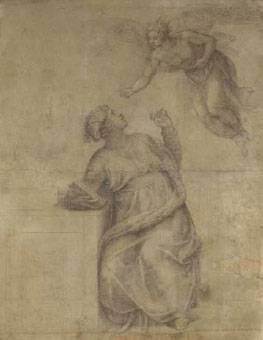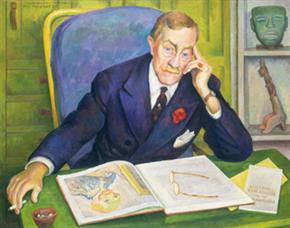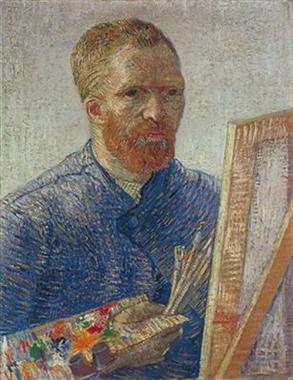
Vincent van Gogh: Self Portrait as an Artist, 1888. Oil on canvas. 65.5 x 50.5 cm. Van Gogh Museum, Amsterdam
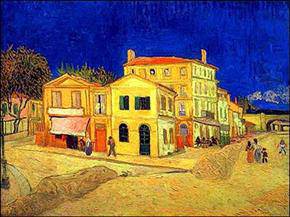
Vincent van Gogh: The Yellow House, September 1888. Oil on canvas, 72 x 91.5 cm. Van Gogh Museum, Amsterdam
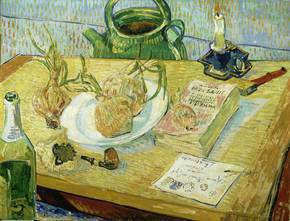
Vincent van Gogh: Still Life with a Plate of Onions, 1889. Oil on canvas, 49.6 x 644 cm. Kröller-Müller Museum, Otterlo, The Netherlands
The Real Van Gogh: The Artist and His Letters
The focus of the exhibition will be the artist’s remarkable correspondence. Over 35 originalletters, rarely exhibited to the public due to their fragility, will be on display in the main galleries of BurlingtonHouse, together with around 65 paintings and 30 drawings that express the principal themes to be foundwithin the correspondence. Thus the exhibition will offer a unique opportunity to gain an insight into thecomplex mind of Vincent van Gogh. This will be the first major Van Gogh exhibition in London for over fortyyears.
23 January – 18 April 2010
]]>
Source: Royal Academy of Arts
In addition to lending almost all the letters in the exhibition, the Van Gogh Museum, Amsterdam, has madeavailable twelve important paintings. Other major lenders include the Kröller-Müller Museum, Otterlo, TheMetropolitan Museum of Art, New York, The Museum of Fine Arts, Boston, and The J. Paul Getty Museum,Los Angeles, together with other museums and private collections worldwide.
Born in Zundert in the southern Netherlands in 1853, Van Gogh was the second of six children of a Protestantpastor. In his early adult life, he worked for a firm of art-dealers in The Hague and London, before becominga missionary worker. His career as an artist began only in 1880, when he was 27. During his ten-year artisticcareer, which his suicide cut tragically short in 1890, Van Gogh’s output was prodigious: largely self-taught,he produced over 800 paintings and 1,200 drawings.
Van Gogh was a compulsive and eloquent correspondent. The majority of his letters were written to hisbrother Theo, an art-dealer who supported Vincent throughout his difficult artistic career. Vincent also wroteto other family members, including his sister Wilhelmina. Other artists, notably Anton van Rappard, EmileBernard and Paul Gauguin, were also, at different phases of Vincent’s life, recipients of his letters. Theoriginality of his ideas about art, nature and literature, combined with his deep understanding of thesesubjects, make Van Gogh’s letters much more than a personal expression of feelings: they attain the status ofgreat literature. In reading the letters one encounters not only a sensitive, determined and exceptionally hardworkingman, but also someone possessed of a powerful intellect; this exhibition will challenge the view thatVan Gogh was an erratic genius by allowing the viewer a rare insight into his artistic process through theintimate medium of his correspondence. Together the letters create a ‘self-portrait’, and reveal the ways inwhich Van Gogh defined himself as an artist and as a human being.
Taking the letters as its starting point, The Real Van Gogh: The Artist and His Letters will view the paintingsand drawings from the perspective of the correspondence. The letter sketches that Van Gogh frequently usedto show a work in progress or a completed work are a fascinating part of the correspondence, and many willbe shown alongside the paintings or drawings on which they are based.
Highlights of the exhibition will include Self-portrait as an Artist (1888) and The Yellow House (1888) from theVan Gogh Museum, Amsterdam; Still-life: Drawing Board with Onions (1889) from the Kröller-MüllerMuseum, Otterlo; Vincent’s Chair with His Pipe (1888) from the National Gallery, London; and Entrance to thePublic Park in Arles (1888) from the Phillips Collection, Washington DC.
Follow us on:

